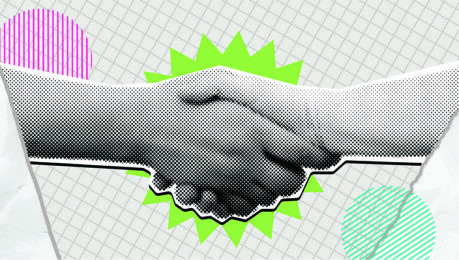As event professionals know, even the best-planned gathering can fall flat without the right marketing. To maximize the impact of and business results from your online or real-world event at a time when some people might be hesitant to travel, it’s vital to start with a comprehensive event marketing plan. This plan outlines the different components your event marketing will need (like a website and content strategy that addresses any concerns prospective attendees might have) and enables you to build a marketing timeline that will attract the maximum number of guests to your event.
Here’s an effective eight-step approach to creating a marketing plan for your event.
1. Plan for a Strong Web Presence
Your web presence will be the core of your event marketing strategy (particularly for online events). Your event’s website and social media accounts host essential event information ranging from the basics—when it’s happening, where and how long it will last—to details about specific panels and event offerings.
A solid website will also be key to managing other aspects of your online marketing strategy. You’ll want an easy-to-navigate website—with a look and feel that reflects your event theme—to deploy content and landing pages for campaigns on email, search, influencer marketing and social media.
In the age of COVID-19, you’ll also want to include a section on your venue’s health and safety precautions. Focus on specifics—like if you’ll provide masks and sanitizer or increase cleaning prior to the event.
2. Prepare to Advertise Your Event’s Mission, Speakers and Partnerships
Once your website is up and running, the next step is to formally announce your event. You should plan to have a few things ready before you do.
First, ensure that you have a blog post and press release that outlines the mission and purpose of your event. You should also use your website to promote speakers and sponsors, and announce partnerships as they come onboard. You can highlight these announcements with posts on social media and email blasts.
Once you’ve nailed down the basics for your event, you’ll also want to advertise the venue. For example, if it has a third-party certification—like the ISSA’s GBAC Star, a biorisk accreditation—you will want to include the logo on your website.
3. Have a Serial Content Strategy Ready
Build anticipation with a serial content strategy and steadily promote content leading up to your event. This content strategy can help you highlight the key benefits of attending your event while also showcasing the panels and speakers to potential attendees.
While content will become more important as you get closer to the event, it’s a good idea to begin building your content strategy early. This will give you a significant archive of content resources to draw on in the weeks leading up to your event.
If possible, this content is a great place to leverage visuals and information from previous events. If you have footage, photos or panel audio, you can use it to demonstrate the potential value of the event.
You can also use your relationships with speakers and influencers to strengthen your content strategy. Testimonials from influencers who will be there can help assure guests they won’t be the only ones venturing out into the world.
4. Take Advantage of All Advertising Channels
Social media, online marketing and email campaigns can all be effective at spreading the word about your event by showing off the speakers, panels and resources you have lined up. Email campaigns can be an especially powerful tool for helping you nurture leads towards deciding to attend your event.
More: Take Your Email Marketing to the Next Level
You should also take advantage of newer advertising methods. For example, you may want to advertise on podcasts relevant to your event. If you’re working with influencers, they can help spread the word on platforms like TikTok, Snapchat and Instagram.
Offline advertising methods can also be very effective at spreading the word about your event—especially if you’re trying to target less plugged-in demographics who aren’t always easily captured by online marketing. A range of print advertising options can help you reach these people.
5. Find Ways to Personalize Your Marketing
A one-size-fits-all approach to marketing your event may not be the best strategy. You can use event personalization to create a more unique and targeted marketing strategy. Start by collecting data about attendee preference with surveys and web analytics, then use it to personalize email blasts and other advertising.
For example, some guests may be more interested in specific speakers and topics than others. You can use information on their preferences, collected from surveys or other sources, to highlight the aspects of your online or live event that are likely to be most relevant to them.
Survey data can also be useful in finding out how comfortable potential guests are with travel right now. Some may be more interested in traveling later in the year, or want assurance that certain health and safety precautions are in place. You can use this information to plan your advertising and scheduling.
6. Connect with Your Speakers
Your speakers will be invaluable in helping you market your event and develop your content strategy. They can use their expertise to help you communicate the unique benefits people can receive or information they will learn by attending your event. They can also help promote it through their network of contacts, who likely have audiences or know people who will naturally be interested in attending your event.
7. Let Attendees Know About Security Checks
As live gatherings gradually resume in the COVID environment, it’s becoming common for events to expand their security check-ins to limit the spread of disease. Many events are creating checkpoints where they quickly screen for symptoms, like fever, in addition to performing typical security checks that events were already using to prevent trouble.
You don’t want your attendees to be caught off guard by these checks. Communicating with your attendees via available advertising channels—especially email and social media—will help them prepare.
If they know about the checks in advance, they can factor in the check-in delays when scheduling how they’ll spend their time at your event. Knowing that such screening is in place may also make prospective guests more comfortable attending your live event.
8. Plan for Last-Minute Promotion
Your marketing strategy will need to ramp up the closer you get to your event. In the final weeks, prepare one last email blast and set of social media posts. This last-minute promotion is one of the best ways to build and take advantage of guest FOMO.
If you have any influencers or speakers you haven’t reached out to, get in touch before it’s too late. You may be able to leverage these contacts and their networks for some last-minute marketing.
Creating Your Event Marketing Plan
More than ever, your comprehensive event marketing plan will be key to the success of your event. Start with laying the foundation for your marketing by building a web presence, formally announcing the event and putting prospective attendee minds at ease. Then, you can move on to content marketing and leveraging your contacts to spread the word. As the event approaches, you can use last-minute promotion to drum up some additional excitement and secure the biggest audience possible.
Lexie Lu is a freelance designer and blogger from Williamsport, PA. Her ideal morning includes some HTML code and a cup of coffee. She writes on Design Roast and can be followed on Twitter @lexieludesigner.





